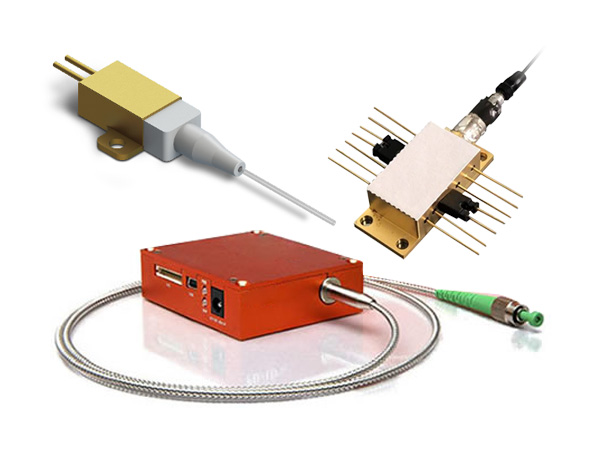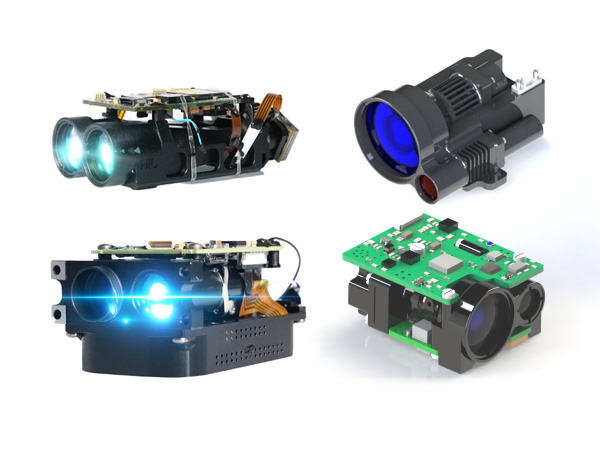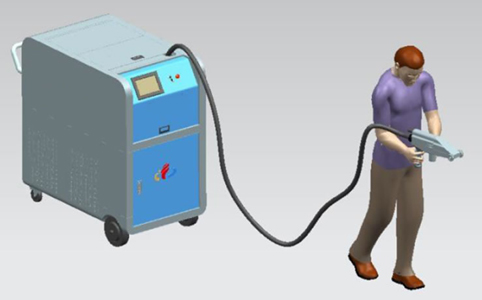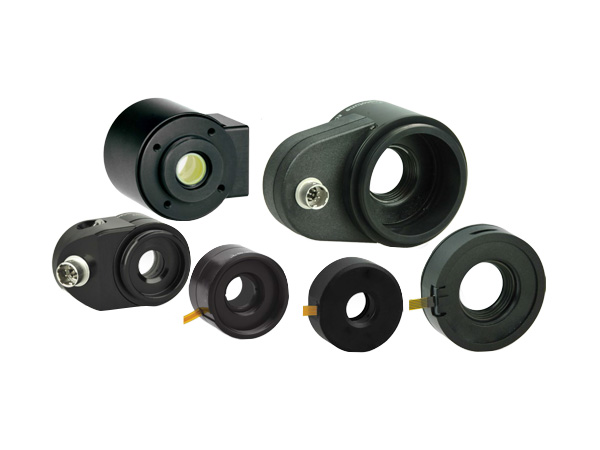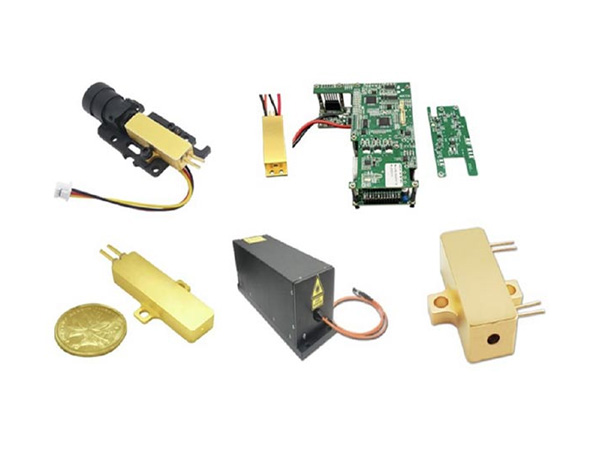Applications of Ultrafast Lasers & OPOs
Applications: Lasers for life sciences
There is a need to conduct advanced laser imaging as part of the private and publically funded research into diseases such as cancer, Alzheimer’s and Parkinson’s which are prevalent due to the aging population.
Various imaging techniques are in common use by biologists and there is a growing demand for higher resolution, faster and more cost-effective cell imaging. Imaging modalities such as laser scanning fluorescence microscopy and single plane illumination microscopy are core techniques that are used routinely in life science and medical laboratories.To obtain these images life scientists require reliable picosecond and femtosecond lasers that provide powers that won’t damage the biological sample under test while generating a suitable non-linear excitation from the sample plane. In this instance, our range of lasers can be used to excite fluorescent dyes and obtain images of particular sub-cellular components such as membranes, mitochondria, nuclei, proteins and ions. These everyday imaging techniques can help to indicate the presence or absence of certain cell dynamics and medical conditions.
The section below highlights just a few of the imaging techniques that have incorporated our STC-Spark1040 laser system, to help illustrate its capabilities in helping others to discover more.Applications: Multi-Photon Single Plane Illumination microscopy
Lightsheet fluorescence microscopy (or single plane illumination microscopy) is a new paradigm in two-photon imaging. This technique is used in cell biology and for microscopy of intact, often chemically cleared, organs, embryos, and organisms.Zebra Fish:
The technique provides excellent optical sectioning capabilities and high speed (up to 1000 times faster than those offered by point-scanning methods). In contrast to epifluorescence microscopy only a thin (0.5-5µm) slice of the sample is illuminated. The sample is then observed perpendicular to the illumination plane.
STC-Spark1040 is the ideal source for multi-photon light sheet fluorescence microscopy. The technique combines good z-sectioning and only illuminates the observed plane. By generating a sheet of light, the optical power is spread across the whole image. This method reduces photo-damage and stresses induced on living samples. Additionally, the excellent optical sectioning capability increases the SNR and creates images with higher contrast, when compared against confocal microscopy.
FSC-1040’s excellent beam quality and high average power makes it ideal for this technique.Two-Photon Lightsheet Microscopy using the FSC1040:
Lightsheet microscopy is a new paradigm in two-photon imaging. Sectioned images can be generated in real time, and a high-density 3-D image stack can be recorded in seconds, representing a major advantage over traditional confocal laser-scanning microscopy. Fluorescence excitation and detection are split into two separate light paths.
Illumination of the sample is perpendicular to the detection axis. This allows for detection of the fluorescence signal only at the in-focal plane without the need for a pinhole or image processing. Images can be generated significantly faster than conventional confocal systems. This application note describes an easy-to-build lightsheet microscope able to image a zebrafish embryo with the FSC-1040.Two-photon lightsheet microscope:
The FSC-1040 excellent beam quality and high average power makes it ideal for two-photon lightsheet microscopy1,2. The system described here combines the FSC-1040 laser with an open-source design for a lightsheet microscope3. Illuminating samples perpendicular to the detection axis makes the technique very photon efficient.
The lightsheet microscope generates photons only in the focal plane and not in other layers of the sample. The technique is ideal for imaging deep within transparent tissues, or within whole organisms. Deep penetration is possible even within scattering tissues, as the samples are exposed to only a thin plane of light (0.5-5 µm of a sample can be illuminated), in contracts to epifluorescence microscopy. This means photobleaching and phototoxicity are comparatively less than in confocal, wide-field fluorescence, or multiphoton microscopy, making it possible to perform more scans per specimen. The technique also delivers high speed imaging with image acquisition up to 1000 times faster than those offered by point-scanning methods.Two-photon lightsheet microscopy is a powerful tool for imaging embryonic development. Zebrafish are often used as an alternative to mammalian species as they are vertebrates with a high degree of similarly in their early development (with respect to many mammals, including humans) and the roles of many biological processes and cell development is homologous across species with vertebrae. They are also mostly transparent and thus enable light sheet imaging through the whole embryo enabling a
stack to be created at different image depths enabling a 3-D reconstruction of the embryo. The specimen for this demonstration was a zebrafish embryo stained with eosin and fixed in agar gel inside a capillary. In the leftmost image the zebrafish head and tail are in focus and generating the strongest two-photon fluorescence signal. As the zebrafish is translated through the lightsheet these features move out of the sheet and become dark, while the yolk sac moves into the sheet and emits strong two-photon fluorescence. This image stack illustrates how easy it is to generate detailed information of the entire embryo using a fast scanning technique.Experimental Setup
The capillary was suspended inside a water filled glass cuvette from a stepper motor, which allowed the sample to be rotated through 360°. The cuvette was fixed onto an optical rail, which also supported a x4 infinity corrected objective lens (Zeiss) and a camera. A lens tube (Thorlabs) was attached to the camera and used to support a 160-mm tube lens at its focal length from the camera sensor. This arrangement allows the camera to be moved freely to allow filters to be inserted between the tube lens and the 4x objective. An xyz stage (Newport) with one axis motorised was used to suspend the stepper motor and sample combination.
Fig. 2 shows the layout, with the entire optical system on a 75-cm x 75-cm breadboard. Light from the laser is steered onto a galvanometer mirror (Thorlabs) which is relay imaged using a pair of AR-coated lenses onto the pupil of a x10 infinity corrected objective lens (Mitutoyo). Before entering the objective the light is attenuated using a half-wave plate and a polarizing beamsplitter, enabling adjustment of the illumination intensity to avoid camera saturation.
Summary
A two-photon lightsheet microscope is easily implemented using the FSC-1040 femtosecond laser and readily available stock optical components. The high stability and high average power of the Spark laser means that two-photon lightsheet microscopy can be easily carried out using any fluorescent agents with some linear absorption in the 500nm region, including RFP, YFP, GFP, Sytox green, fluorescein and many others.
Contact us to discuss integrating a FSC-1040 laser in your lightsheet microscopy systemApplications: Two Photon Light Sheet Microscopy Optogenetics
Multi-photon optogenetics
There is a drive in multi-photon microscopy applications in optogenetics to study increasingly larger groups of neurons, and to image deeper into live brain tissue or over wider areas. Today’s cutting-edge experiments involve simultaneous stimulation/interrogation of a few tens of neurons, but some researchers would like to push this number to as many as 1,000 neurons. Optogenetics is already used in a broad range of experiments. In microscopy, optogenetics has enabled all-optical physiology experiments where optical microscopy is used to image the morphology of a group of live neurons.
Fluorescence Rat Brain
A range of multi-photon imaging techniques make use of the non-linear processes that can be generated by using ultrashort pulses. Multi-photon absorption (i.e., excitation) in a fluorophore can be generated by using a near-IR laser wavelength that excites a label, fluorescent protein or indicator with a strong single-photon absorption at about half the near-IR laser wavelength. Other nonlinear techniques used for 3D microscope imaging include three-photon excitation of fluorescence and second harmonic generation (SHG). Through these techniques the light generated by the sample only occurs at the beam waist allowing for high resolution imaging.
1) Inherent 3D resolution allows cells or groups of cells to be imaged at typically micron resolution in the Z-axis and a few hundred nanometers in the XY plane. Using a pulse laser source also allows time resolved measurements to be taken.
2) Using the FSC-1040 allows the capture of image at greater sample depths. Light scatter is often the limiting factor for microscopy imaging of thicker samples. Mie scattering within a sample can have a significant effect on the signal to noise ratio of the detected signal, as it has a highly nonlinear dependence on wavelength. Use of a 2-times or even 3-times longer wavelength results in a 16-times or 81-times reduction in scatter as well as an increase in imaging depth.3) Photobleaching and photothermal degradation is reduced, allowing in vivo experiments to be more readily accessible.
Historically, optogenetic experiments have made use of solid-state laser sources. When a second wavelength is needed an expensive and bulky independently tunable optical parametric oscillator (OPO) has been required. However, as researchers are keen to image larger neuron populations there is a requirement for more than 1 watt at wavelengths longer than 1 micron.To meet this demand, we developed a high average power ultrafast laser that can deliver up to 2.5 W at 1040 nm. This new generation of ultrafast lasers offer the requisite power and pulse duration to perform multineuron studies while also providing reliability that allows you to focus more on the imaging and less on the laser.
Applications: Multi Photon Microscopy
Two-Photon Fluorescence Microscopy with the FSC-1040:
The FSC-1040 provides the perfect balance of peak-power, pulse duration and average power for generating images of biological samples through a two-photon nonlinear process. In this application note we illustrate the suitability of the FSC-1040 for two photon microscopy, to image a wide range of cells with various labels.
Two-photon fluorescence microscopy
In recent years two-photon fluorescence microscopy has become a powerful tool to study biological functions in vivo. In comparison to many standard imaging techniques it has become vital to optogenetic research as it has enabled deeper imaging in highly light scattering brain tissue with reduced photobleaching and improved spatial resolution. The main advantages of two-photon fluorescence microscopy is that it enables excitation with a source which scatters less and only excites samples in the focal plane, thereby providing better spatial resolution. This requires a highly stable femtosecond laser, which provides the required combination of pulsewidth, pulse energy and average power to enable highresolution imaging of biological samples. A range of samples have been imaged using the FSC-1040 to demonstrate its two-photon fluorescence microscopy capabilities.
Imaging of Invitrogen FluoCells, Kidney, Liver and Collagen
The FSC-1040 was used as the excitation laser to selectively highlight several different markers in a range of samples. Unlike solid-state lasers, which can produce beams with an elliptical cross-section, our laser beam originates from a single-mode fibre, so it is perfectly symmetric. This makes the laser system ideally suited for coupling into commercial laser-scanning microscopes to provide excellent beam shape and high average powers at the sample plane.
Fig. 1 shows typical images acquired from the system when imaging; Fig. 1(a) – Invitrogen Fluocells - section of mouse intestine (cells approximately 5 µm in diameter) via excitation of Sytox Green; Fig. 1(b) demonstrates liver cells imaged using direct excitation of RFP, YFP and GFP using the same excitation laser (images overlaid); and Fig. 1(c) which shows kidney cells overlaid by collagen and demonstrate the ease with which samples can be differentiated using mT:mG as a marker and SHG from the collagen fibres (making it easy to differentiate between cell types). The power levels from the FSC-1040 were more than adequate for generating these fluorescence images, which were recorded with only 150 mW incident on the galvoscanning mirrors.
The FSC-1040 produces a free-space beam ideally suited for coupling into microscope systems. Additionally, the output is horizontally polarized, making it a perfect source for two-photon polarization microscopy (including second harmonic generation microscopy). Unlike other systems on the market, the FSC-1040 is insensitive to small amounts of light reflected back from the microscope, so an optical isolator is typically not required between the laser and the microscope, thus minimizing the losses within the optical system.Experimental Setup
The images were acquired using a Nikon microscope, into which the beam was introduced via a pair of galvo-scanning mirrors. A Nikon 60x Plan Apochromat oil immersion objective (NA 1.4, working distance 0.21 mm) was used to image the samples. A 520-nm notch filter (Semrock Brightline FF01-520/15-25) filtered out the two-photon fluorescence signal, which was collected using a standard photo-multiplier tube (PMT). Fig. 2. illustrates the setup used and the FSC-1040 system.
Summary
Including the STC-Spark1040 femtosecond laser as part of a multi-photon imaging system allows users to generate exceptionally clear, high-resolution images, a result of the its excellent beam quality, ultrafast pulses and high average power levels. Contact us for advice on achieving your multi-photon imaging requirements. Second harmonic generation (SHG) microscopy is also possible with the FSC-1040 femtosecond laser.
Applications: Second Harmonic Generation Microscopy
In recent years, SHG microscopy has proven its capability in the study of crystallized bio-molecules such as starch, collagen and myosin. SHG imaging can reveal the structural organization and molecular orientation within non-centrosymmetric tissue structures.
mtmg liver 500mw
Starch, which is an important food source and a promising future energy candidate, has been shown to exhibit strong SHG response and is a relatively new tool for plant research and other applications.
The FSC-1040 can be used to generate an SHG signal in a solution of starch molecules. The FSC-1040 output beam originates from a single-mode fibre, making the system ideally suited for coupling into commercial laser-scanning microscopes. This saves time, when setting up samples, and allows images to be acquired sooner.The figure above illustrates typical images acquired from the system in the forward direction. The power levels from the Spark were more than adequate for generating these fluorescence images, which were recorded with 150 mW incident on the galvo-scanning mirrors.
Applications: SHG Imaging
Second-Harmonic Generation Imaging using the FSC-1040
Second-harmonic generation imaging microscopy (SHG Microscopy, also known as SHIM) offers several advantages for live cell and tissue imaging. The ultrafast pulsewidth of the FSC-1040 is ideal for generating a second-harmonic response from a wide range of biological samples. This application note illustrates the suitability of the FSC-1040 for generating SHG images in starch granules and collagen fibres.
Second harmonic generation imaging
In recent years, SHG microscopy has proven its capability in the study of crystallized biomolecules such as starch, collagen and myosin. Unlike fluorescence-microscopy, SHG microscopy does not involve the creation of excited electronic states, so cell viability issues associated with heating and photo-bleaching are reduced. By using near-infrared wavelengths it enables the construction of 3-D images of specimens by imaging deeper into thick tissues. It enables the direct visualization of tissue structure (in situ) as it relies only on species present in the sample to provide a contrast. Imaging with external markers/labels normally only infer structural aspects as it relies on absorption whereas SHG microscopy signals stem from an induced polarization of tissue samples whose structural organization and molecular orientation are non-centrosymmetric, such as collagen and starch.
Collagen imaging
The non-centrosymmetric molecular structure of collagen makes it an ideal sample to image with SHG microscopy. Using a simple setup illustrated in Fig. 2(a). images of collagen fibres could be acquired in both the forward and backward directions. Fig. 1 demonstrates the typical images that can be generated by SHG Microscopy when using the FSC-1040.
Fig. 2 illustrates the imaging of collagen fibres overlaid on a liver sample which has been imaged using multiphoton microscopy. The SHG method enables accurate structural information to be detected using the Spark 1040 as an excitation source. The liver has been imaged using mT:mG and two-photon microscopy with a two channel detection system enabled the simultaneous acquisition of SHG images of the collagen and the two-photon fluorescene signal of the liver, before recombining as a single image.
Experimental Setup and Starch Imaging
Starch, which is an important food source and a promising future energy candidate, has been shown to exhibit strong SHG response and is a relatively new tool for plant research and other applications.
Fig. 2(a). illustrates how the Spark 1040 was used to generate an SHG signal in a solution of starch molecules. Unlike solidstate lasers, which can produce beams with an elliptical crosssection because of astigmatism in the laser cavity, the laser’s beam originates from a singlemode fibre, so it is perfectly symmetric making it ideally suited for coupling into commercial laser-scanning microscopes. A Nikon microscope was used, into which the beam was introduced via a pair of galvoscanning mirrors. A Nikon x60 plan Apochromat oil immersion objective (NA 1.4, working distance 0.21 mm) was used to image the starch samples. A suitable filter was used to reject all wavelengths except the SHG signal, which was collected using a photo-multiplier tube (PMT).
Summary
The FSC-1040 is an ideal source for an SHG Microscopy system, allowing users to generate exceptionally clear, high-resolution images, a result of the excellent beam quality and high average power levels.
Please contact us for advice on achieving your SHG microscopy requirements.Multi-photon microscopy is also possible with the FSC-1040 femtosecond laser, and is described in
Second harmonic generation (SHG) imaging of collagen fibres
The non-centrosymmetric molecular structure of collagen also makes it possible to image collagen fibres in SHG using the FSC-1040. Images can be acquired in both the forward and backward directions.
Including the FSC-1040 femtosecond laser as part of a SHG imaging system allows users to generate exceptionally clear, high-resolution images, a result of the Spark’s excellent beam quality and high average power levels.
Applications: Security and Defence
Defending and protecting our world is becoming an ever more important part of our lives. Laser systems are becoming an important source for stand-off (remote) detection, to determine the identification of a wide range of hazardous solids, liquids and gases.Different chemical signatures can be identified, via stand-off detection or infrared spectroscopy instrumentation, and the OPO technology is a key source enabling a wider range chemical signatures to be identified.
We have two products, the FSC-1040 (1.4 µm – 4.2 µm) and the FSC-OPO (5 µm – 12 µm). The tuning range of these systems enables spectroscopic sensing of different materials over a wide spectral range. The FSC-OPO in particular is ideally suited to sensing molecular spectra in the fingerprint region of the infrared spectrum where many organic molecules exhibit unique spectroscopy patterns. The STC-Spark-OPO-FIR is the world’s first commercial OPO providing high average powers which enable faster and more accurate detection. Both OPOs are compact, rugged units which cover an important spectral range where a wide range of different chemicals have strong absorption lines, that can now be detected and identified, even at a distance. These include explosives, toxic chemicals and gases, such as methane.Detecting these type of substances has traditionally been difficult to achieve due to the lack of suitable commercial sources available. The STC-Spark1040 and FSC-OPO now provide the perfect solution thanks to their high powers, short pulse duration (for time dependent measurements), large wavelength span and compact footprint.
With access to multiple wavelengths , it is possible to measure more than one spectral region at any one time, thus leading to faster data acquisition and more sophisticated detection techniques. This technology can be implemented across a wide range of different scenarios, ranging from military threat detection to airport and events security.Applications: Lasers for the environment
Monitoring greenhouse gases, and other pollutants in our atmosphere are just a few key areas that are becoming ever more important global concerns. Issues such as these require spectroscopic techniques to help us discover what toxic species are in our atmosphere and determine mitigating steps to take next.
One way of tackling these concerns is via high resolution gas spectroscopy. There are several different ways of carrying out gas spectroscopy. In many cases, the quality of the light source used in spectroscopy has a significant influence of the quality of the results. The high average powers and short pulse durations of our FSC-OPO allows the detection of gas molecules with a resolution of parts per billion. Being able to identifying gas leaks or monitor the quality of powders and liquids are also important for a range of research and commercial applicationsHigh average power and high peak power along with high spatial and spectral brightness are key to delivering accurate results. This is where the FSC-OPO excels. In addition, the wide tuning range of the system, allows for the detection of many different chemical signatures.
With a web-based, intuitive user interface and maintenance-free operation, the FSC-OPO is the ideal source for laser-based sensing across the 1.4 µm – 4.2 µm wavelength region.The newly launched FSC-OPO is a source for 5-12 µm light in the molecular fingerprint region (so called due to its unique absorption patterns for most organic molecules) enabling more accurate detection of pollutants.
Applications: Semiconductor Failure Analysis
Semiconductor Failure Analysis (FA) is the process of determining how or why a semiconductor device has failed. Semiconductor components/devices are ubiquitous within our daily lives. Understanding the cause of failures of these devices at the earliest stage of the production pipeline is key to keeping costs down and efficiencies up.
A range of different techniques have been developed to assess these failures. Recent developments in this regime have exploited the use of laser scanning near infrared microscopy for the purposes of through-silicon fault localisation and defect characterisation.Dynamic laser stimulation covers an extensive range of microelectronic device probing configurations and technologies for advanced CMOS integrated circuit failure analysis. Traditionally cw 1064 nm or 1340 nm laser sources have been utilised to carry out laser-induced photo-electric or photo-thermal functional tests.
Examples of such analytical optoelectronic probing platforms include soft defect localisation and laser assisted device localisation (LADA). These advanced modalities function by enticing operationally sensitive transistors to advance or delay their switching characteristics as part of a pre-determined pass/fail process. There is an inability to temporally profile functional devices (thus providing uncertainty in the root cause silicon data set).Consequently, several within the semiconductor failure analysis community have begun to develop custom pulsed laser-based application driven, laser probing techniques for the interrogation of nanoscale flip chip architectures.
Due to this interest, we have developed the FSC-X. The system provides ultrashort pulses between 1250 nm – 1310 nm (depending on application). To-date these systems have been used as part of solid immersion lens-enhanced two-photon absorption-induced single–event upsets (SEU) monitored and assessed by way of an electrical LADA-based tester stimulus. Femtosecond near infrared radiation can deliver significant levels of peak optical power to a functional device which, in turn can temporarily disturb the prescribed digitisation level in local memory cells, holding their individual transistors in artificially high electronic states until the operational sequence is reiterated.The FSC-X will allow the FA community to implement ultrafast nonlinear optoelectronic probing platforms for the purpose of advanced IC debug and characterisation with the best localised volumetric resolution performance. In addition to the impressive spatial performance of both 2pLADA and 2pSEU, the temporal performance of this technique offers the significant ability to characterise failures which has yet to be fully discovered.
Applications: Fundamental Research
Fundamental research drives ever faster acquisition of scientific knowledge and the development of tomorrow’s technology.
Research projects, both big and small, require access to cutting edge technology. The FSC series has been designed for use in fundamental research from in the lifesciences, chemistry and physics (to name a few) but are cost-effective and turnkey solutions to enable researchers to concentrate on their research and not running equipment. Having spun-out of a research institute, We understand that bespoke laser systems may be required to reach research goals.The STC series product range are designed to enable cutting-edge research whilst being compact and easy to use. The FSC-1040, for instance, is an ideal source for non-linear physics experiments such as pumping OPO crystals or photonic crystal fibres (PCF) for wavelength conversion experiments. The FSC-OPO is an ultrafast source for use as a pump for infrared PCF systems to extend the supercontinuum generation into the mid-infrared.
We have worked with higher educational institutes, spin out companies and commercial outfits to deliver laser technologies that meet very specific requirements. From our simple to use femtosecond oscillator the FSC-1040 to the pioneering FSC-OPO system providing output in the fingerprint spectroscopy region, We work with you to further your research.If you are involved in a project that you feel we may be able to collaborate with you on or our products may be suitable for, then please don’t hesitate to contact us.
Applications: Near-IR Generation using FSC-1040
The high-peak-power pulses (>100 kW) from the FSC-1040 femtosecond laser make it easy to drive nonlinear effects like optical parametric oscillation, supercontinuum generation and Raman soliton creation. We discuss how to implement supercontinuum generation in nonlinear fibre to provide a cost-effective means of producing broadband near-infrared light for spectroscopy, optical coherence tomography, CARS spectroscopy/microscopy and other applications.
Supercontinuum and Raman soliton generation
The FSC-1040 is an ideal source to generate a cost-effective near-infrared supercontinuum by focusing ultrashort pulses into non-linear materials, such as photonic crystal fibres. The high energy per pulse, free-space beam from the FSC-1040 is ideally suited for coupling into optical fibres. Unlike solid-state lasers, which tend to produce beams with an elliptical cross-section (due to astigmatism in the laser cavity), the FSC-1040 ‘s output originates from a single-mode fibre, so it is perfectly symmetric.
Light from the FSC-1040 can be coupled into commercially available photonic-crystal fibres with efficiencies of greater than 75%. We recommend the use of connectorized photonic crystal fibres to minimise the risk of fibre damage and contamination.
The recommended fibre-launch arrangement is shown in Fig. 1. Unlike Ti:sapphire lasers, the laser is insensitive to small amounts of light reflected from the fibre facet, eliminating the need for an optical isolator between the laser and the fibre.
The FSC-1040 (shown in Fig. 2.) produces horizontally polarized light directly from the laser. When coupling into polarization maintaining or photonic-crystal fibre it is important to align the polarization of the laser to the fibre’s structure. This can be done by using a pair of quarter- and halfwaveplates, available separately. Please contact us for details.
When using photonic-crystal fibre, coupling efficiency improvements of around 10% are possible by optimizing the input polarization. While a microscope objective may be used, for best efficiency and to reduce dispersive broadening of the pulses an aspheric lens is recommended whose focal length matches the beam diameter of the Spark 1040 to the fibre core size. Careful selection avoids the need to telescope the beam prior to the fibre, improving stability and reducing unnecessary loss. The data in Fig. 3 show supercontinuum spectra (right column) generated using 1.5 m of NKT SC-3.7-975 fibre, along with simulation results (left column) obtained using the measured pulses from the Spark 1040. The ability to predict the supercontinuum which will be generated using the Spark laser makes it easy to select the ideal nonlinear fibre for your application. Chromacity can provide customers with simulation data informing their choice of fibre type and length.For some applications only the near-infrared output of the supercontinuum is required. When using pulses of sufficiently short duration, such as those produced by the FSC-1040, the Raman soliton generated above 1200 nm can be filtered to produce transform-limited sub-100-fs pulses with average powers of up to 50 mW. The centre wavelength of this soliton can be tuned over 100 nm by adjusting the coupled power, depending on the nonlinear fibre used.
Summary
Exceptionally broad and flat supercontinua from 750-1300 nm can be produced using the FSC-1040 femtosecond laser, which delivers excellent coupling efficiencies and easy fibrelaunch requirements. The high natural stability of the system means that supercontinuum generation is stable and easily generated for real-world applications.
Please contact us for advice on achieving your required supercontinuum spectrum.
Applications: Nonlinear Mid-IR Generation using FSC-1040
The high average power and high peak power of the STC-Spark1040can be used to generate mid-infrared light from 1.4 – 4 µm by pumping optical parametric oscillators. These OPOs can be used as a source for broadband infrared spectroscopy, Fourier-transform spectroscopy and stand-off detection.
Optical parametric oscillators
The nonlinear response of certain crystals, such as lithium niobate, allows the generation of shorter wavelengths via second-harmonic generation and sum-frequency mixing, or longer wavelengths by parametric down-conversion. An optical parametric oscillator (OPO) makes parametric down- conversion highly efficient by placing the nonlinear crystal inside a highreflectivity cavity:
Converting a regular sequence of femtosecond pulses using an OPO requires the use of a cavity which is exactly length matched ("synchronous pumping") to that of the Spark 1040 laser, for example a simple 4-mirror design (Fig. 2). Tuning in a synchronously pumped OPO is available by either changing the crystal angle / grating period or adjusting the cavity length.
Optical parametric oscillator pumping using the Spark 1040 femtosecond laser The FSC-1040 can easily generate a broad range of wavelengths using a commercial off the-shelf MgO:PPLN crystal1 . Fig 3. shows spectra of the mid-infrared idler and near-infrared signal that is typically generated. Tunability throughout the 1.4-2.0 µm and 2.1-4.2 µm regions is obtainable using a suitable MgO:PPLN crystal and mirror set. Powers of around 10 mW in the idler and 50 mW in the signal are available with picosecond pulsed output, higher powers are provided in a quasi-CW regime
Summary
Using optical parametric oscillation, output from the Spark 1040 can be converted into the near- and mid-infrared spectral region. Its excellent stability allows synchronously-pumped OPOs to operate with high stability across a wide wavelength range.Please contact us to discuss your OPO application needs.
 English
English Français
Français Deutsch
Deutsch euskara
euskara Русский язык
Русский язык Italiano
Italiano Português
Português Nederlands
Nederlands Polski
Polski Greek
Greek Lietuva
Lietuva Türkçe
Türkçe 日本語
日本語 한어
한어 中文
中文 தாமில்
தாமில் فارسی
فارسی हिंदी
हिंदी Tiếng Việt
Tiếng Việt ภาษาไทย
ภาษาไทย Pilipino
Pilipino Indonesia
Indonesia தாமில்
தாமில்
